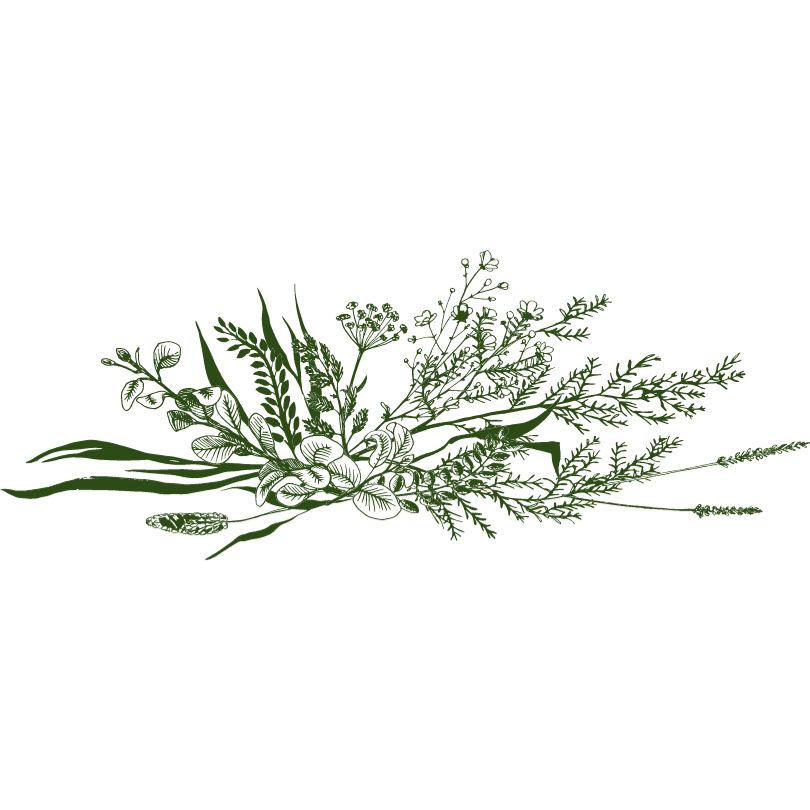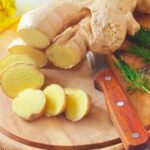Salvia Officinalis, Learning the secrets of Common Sage
Part of the mint family, Sage is an astringent, antiseptic, antimicrobial, a carminative and diaphoretic.
It’s energetics are warming and drying
It’s a hard working herb that can do a lot for you and it tastes fabulous too.
What else could you ask for?
Those energetics make it fabulous for the cold season.
As a diaphoretic, sage will help move a fever along, letting it get its job done more efficiently and effectively.
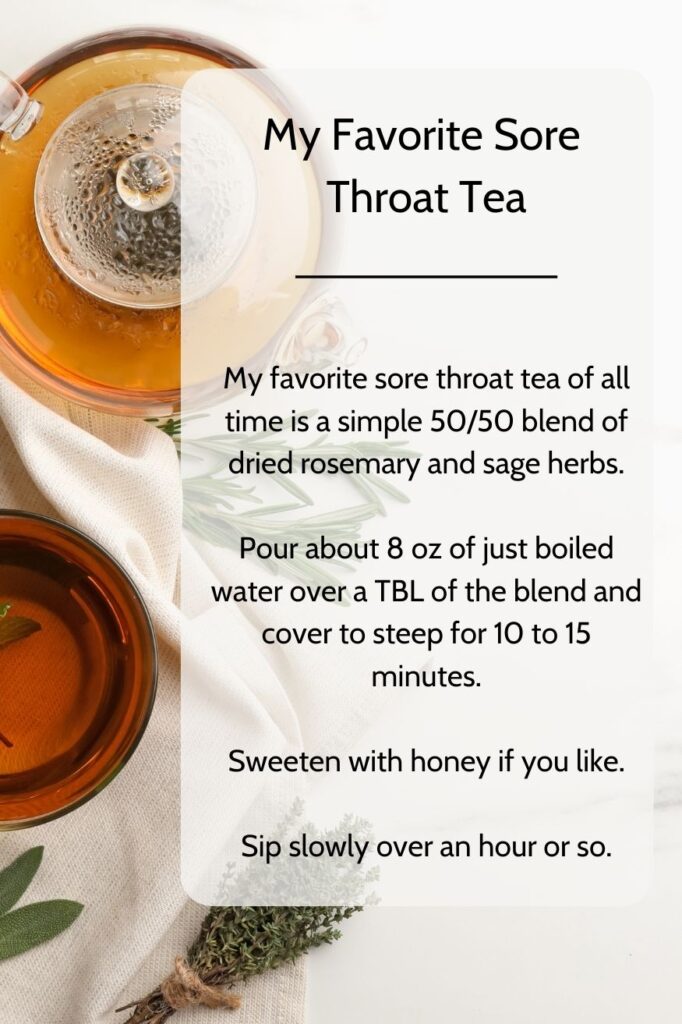
Making a strong tea and inhaling the steam can help to break up mucus in the lungs and sinuses.
As an astringent it will help reduce swelling when you have a sore throat which allows you to drink more and stay hydrated and, of course, drink the herbal teas you need to drink when you’re not feeling well.
Mix it with Rosemary for an especially tasty tea when you have a sore throat.
I first used this tea blend when I was sick with COVID. It was amazing.
It kept my throat pain-free allowing me to drink all the other tea blends I needed to get me through it.
Who says what’s good for you has to taste bad?
And as an antiseptic and antimicrobial it will help fight any secondary infections you could get in your sinuses or throat.
Making a warm tea is the best way to use sage for the cold & flu season. When you’re sick you just can’t beat a warm tea and sage’s warming energetics are perfect.
Sage as a carminative
Sage is great for digestion, especially for those folks who have issues digesting fats. Perfect for a big holiday meal.
Drink it as a tea before, during or after your meal, or simply use it as a spice in your food.
Either way, sage will get your digestion up and moving.
Sage has an affinity for the mouth and throat.
Its astringency actions can work really great for the mucus membranes of the mouth.
Make a strong tea for a mouthwash to help tighten spongy and bleeding gums.
Its antiseptic & antimicrobial actions work great for mouth ulcers, canker sores and cold sores too.
Making sage into a tincture and adding it to other ingredients is another great way to create something for these applications too.

Cognition & Memory
Studies have shown sage can help people with mild to moderate symptoms of Alzheimer’s disease.
My dad had dementia for the last 2 to 3 years of his life, that we knew of. I wish I would have known about this back then. I would have been so happy to try this for him. Alzheimer’s & Dementia is such an awful disease.
In one study, folks taking a sage extract for four months showed significant improvement in cognitive functions with less agitation compared to those in the placebo group.
Using sage for cognition & memory can be done by tea or tincture. Either way will work great.
And you don’t have to have a disease to use it. It’s great for those of us, who with normal aging, walk into a kitchen and forget what we were after.
Hot flashes and night sweats?
Sage was one of the teas I drank on a regular basis when I went through the change of life.

The hot flashes and night sweats drove me crazy until I finally learned about the effects sage has on them. Once I figured that out, I rarely had any issues with either anymore.
Like everything, it probably won’t work for everyone, but it sure doesn’t hurt to give it a try.
Herbalist Phyllis Light says sage is “…specific for the transition from fertility levels of estrogen to post-menopausal levels.”
A tincture or a tea is great for these issues. A tea is probably not something you would want to drink too much of just before going to bed at night. But using a tincture everyday or every other day is something that could be easily done in the morning.
Other known uses for Sage
A diluted sage vinegar can be used externally to relieve sunburn pain.
Infuse vinegar (white or apple cider) with sage and then dilute to 1:3 with water.
Western culinary sage has been used for a variety of stagnant blood conditions such as varicose veins.
And it infuses well into witch hazel extract, which can then be used as a facial toner, on varicose veins, or as a deodorant.
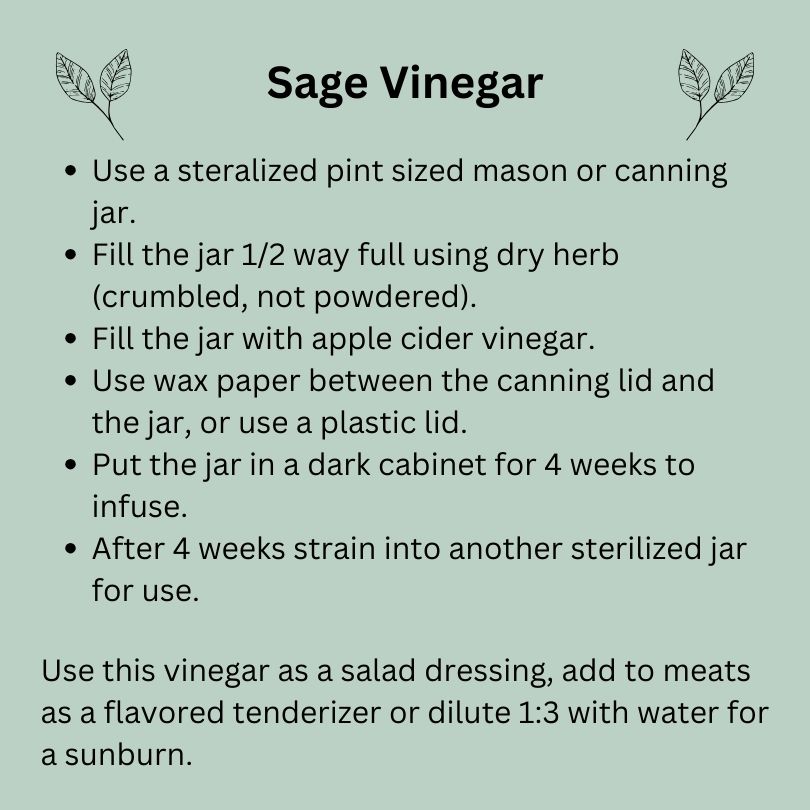
Some esoteric uses for Sage
- Salvia officinalis has been used since ancient times to ward off evil spirits, increasing women’s fertility, and more.
- The Romans referred to sage as the “holy herb,” and it was used in their religious rituals.
- Cleansing or smudging is the burning of smudge sticks and has been used in ancient spiritual rituals by a lot of different cultures.
- It’s believed that burning these smudge sticks can clear out spiritual impurities, negativity, bad experiences, bad spirits, pathogens and for some, they believe it can enhance intuition, create a healing state of mind or help solve dilemmas.
A well rounded herb
Martin Luther is said to have asked in the middle ages, “Why should a man die when sage grows in his garden?”
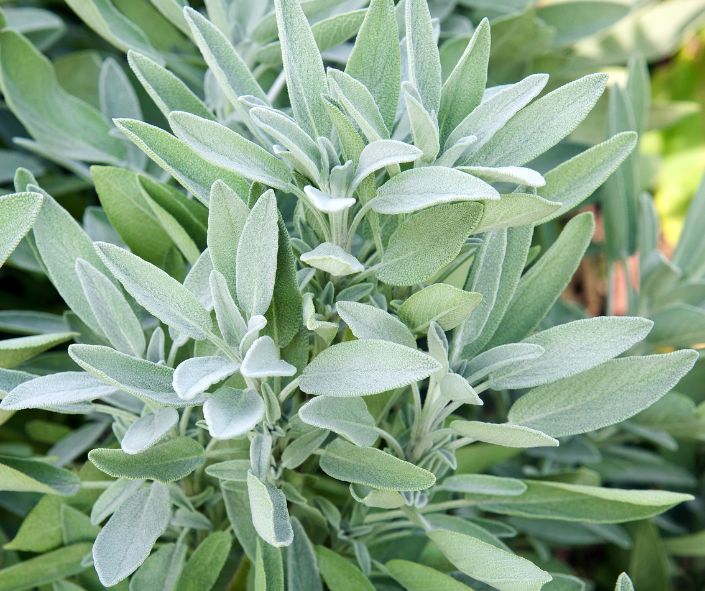
That statement is reflected in the herb’s Latin name Salvia, derived from the Latin word “to heal”.
The other half of the name, “officinalis”, refers to the plant’s medicinal use and to the “officina” which was the traditional storeroom of a monastery where herbs and medicines were stored.
Sage has been used for centuries for all kinds of things and in most cases it still is. That’s says something for its effectiveness in those uses.
Contraindications: As with most herbs large amounts of sage is contraindicated in pregnancy and nursing. Sage can actually dry up the flow of milk during lactation, so it should be avoided unless the mother is ready to wean.
When you get a chance, give it a try. Try one of the recipes and then, in the comments below, let me know what you think.
